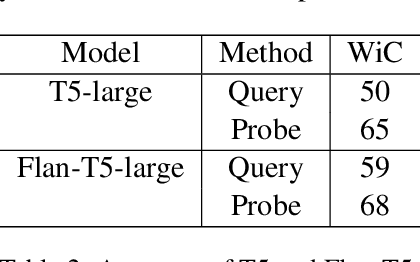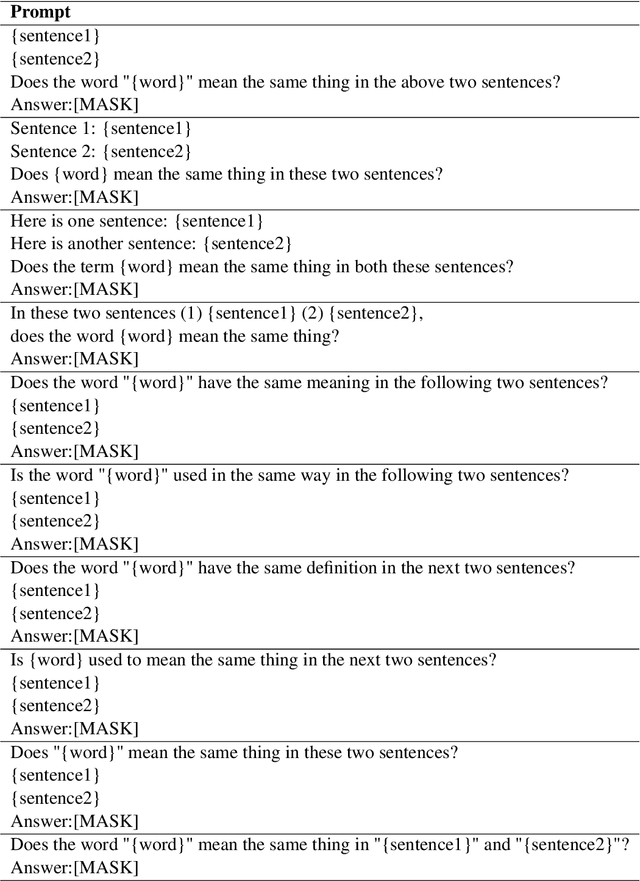Ruiyu Wang
Nondeterministic Polynomial-time Problem Challenge: An Ever-Scaling Reasoning Benchmark for LLMs
Apr 15, 2025Abstract:Reasoning is the fundamental capability of large language models (LLMs). Due to the rapid progress of LLMs, there are two main issues of current benchmarks: i) these benchmarks can be crushed in a short time (less than 1 year), and ii) these benchmarks may be easily hacked. To handle these issues, we propose the ever-scalingness for building the benchmarks which are uncrushable, unhackable, auto-verifiable and general. This paper presents Nondeterministic Polynomial-time Problem Challenge (NPPC), an ever-scaling reasoning benchmark for LLMs. Specifically, the NPPC has three main modules: i) npgym, which provides a unified interface of 25 well-known NP-complete problems and can generate any number of instances with any levels of complexities, ii) npsolver: which provides a unified interface to evaluate the problem instances with both online and offline models via APIs and local deployments, respectively, and iii) npeval: which provides the comprehensive and ready-to-use tools to analyze the performances of LLMs over different problems, the number of tokens, the aha moments, the reasoning errors and the solution errors. Extensive experiments over widely-used LLMs demonstrate: i) NPPC can successfully decrease the performances of advanced LLMs' performances to below 10%, demonstrating that NPPC is uncrushable, ii) DeepSeek-R1, Claude-3.7-Sonnet, and o1/o3-mini are the most powerful LLMs, where DeepSeek-R1 outperforms Claude-3.7-Sonnet and o1/o3-mini in most NP-complete problems considered, and iii) the numbers of tokens, aha moments in the advanced LLMs, e.g., Claude-3.7-Sonnet and DeepSeek-R1, are observed first to increase and then decrease when the problem instances become more and more difficult. We believe that NPPC is the first ever-scaling reasoning benchmark, serving as the uncrushable and unhackable testbed for LLMs toward artificial general intelligence (AGI).
Can Visuo-motor Policies Benefit from Random Exploration Data? A Case Study on Stacking
Mar 30, 2025Abstract:Human demonstrations have been key to recent advancements in robotic manipulation, but their scalability is hampered by the substantial cost of the required human labor. In this paper, we focus on random exploration data-video sequences and actions produced autonomously via motions to randomly sampled positions in the workspace-as an often overlooked resource for training visuo-motor policies in robotic manipulation. Within the scope of imitation learning, we examine random exploration data through two paradigms: (a) by investigating the use of random exploration video frames with three self-supervised learning objectives-reconstruction, contrastive, and distillation losses-and evaluating their applicability to visual pre-training; and (b) by analyzing random motor commands in the context of a staged learning framework to assess their effectiveness in autonomous data collection. Towards this goal, we present a large-scale experimental study based on over 750 hours of robot data collection, comprising 400 successful and 12,000 failed episodes. Our results indicate that: (a) among the three self-supervised learning objectives, contrastive loss appears most effective for visual pre-training while leveraging random exploration video frames; (b) data collected with random motor commands may play a crucial role in balancing the training data distribution and improving success rates in autonomous data collection within this study. The source code and dataset will be made publicly available at https://cloudgripper.org.
Lifelong Learning with Task-Specific Adaptation: Addressing the Stability-Plasticity Dilemma
Mar 08, 2025Abstract:Lifelong learning (LL) aims to continuously acquire new knowledge while retaining previously learned knowledge. A central challenge in LL is the stability-plasticity dilemma, which requires models to balance the preservation of previous knowledge (stability) with the ability to learn new tasks (plasticity). While parameter-efficient fine-tuning (PEFT) has been widely adopted in large language models, its application to lifelong learning remains underexplored. To bridge this gap, this paper proposes AdaLL, an adapter-based framework designed to address the dilemma through a simple, universal, and effective strategy. AdaLL co-trains the backbone network and adapters under regularization constraints, enabling the backbone to capture task-invariant features while allowing the adapters to specialize in task-specific information. Unlike methods that freeze the backbone network, AdaLL incrementally enhances the backbone's capabilities across tasks while minimizing interference through backbone regularization. This architectural design significantly improves both stability and plasticity, effectively eliminating the stability-plasticity dilemma. Extensive experiments demonstrate that AdaLL consistently outperforms existing methods across various configurations, including dataset choices, task sequences, and task scales.
Text-to-CAD Generation Through Infusing Visual Feedback in Large Language Models
Jan 31, 2025



Abstract:Creating Computer-Aided Design (CAD) models requires significant expertise and effort. Text-to-CAD, which converts textual descriptions into CAD parametric sequences, is crucial in streamlining this process. Recent studies have utilized ground-truth parametric sequences, known as sequential signals, as supervision to achieve this goal. However, CAD models are inherently multimodal, comprising parametric sequences and corresponding rendered visual objects. Besides,the rendering process from parametric sequences to visual objects is many-to-one. Therefore, both sequential and visual signals are critical for effective training. In this work, we introduce CADFusion, a framework that uses Large Language Models (LLMs) as the backbone and alternates between two training stages: the sequential learning (SL) stage and the visual feedback (VF) stage. In the SL stage, we train LLMs using ground-truth parametric sequences, enabling the generation of logically coherent parametric sequences. In the VF stage, we reward parametric sequences that render into visually preferred objects and penalize those that do not, allowing LLMs to learn how rendered visual objects are perceived and evaluated. These two stages alternate throughout the training, ensuring balanced learning and preserving benefits of both signals. Experiments demonstrate that CADFusion significantly improves performance, both qualitatively and quantitatively.
PACA: Perspective-Aware Cross-Attention Representation for Zero-Shot Scene Rearrangement
Oct 29, 2024



Abstract:Scene rearrangement, like table tidying, is a challenging task in robotic manipulation due to the complexity of predicting diverse object arrangements. Web-scale trained generative models such as Stable Diffusion can aid by generating natural scenes as goals. To facilitate robot execution, object-level representations must be extracted to match the real scenes with the generated goals and to calculate object pose transformations. Current methods typically use a multi-step design that involves separate models for generation, segmentation, and feature encoding, which can lead to a low success rate due to error accumulation. Furthermore, they lack control over the viewing perspectives of the generated goals, restricting the tasks to 3-DoF settings. In this paper, we propose PACA, a zero-shot pipeline for scene rearrangement that leverages perspective-aware cross-attention representation derived from Stable Diffusion. Specifically, we develop a representation that integrates generation, segmentation, and feature encoding into a single step to produce object-level representations. Additionally, we introduce perspective control, thus enabling the matching of 6-DoF camera views and extending past approaches that were limited to 3-DoF top-down views. The efficacy of our method is demonstrated through its zero-shot performance in real robot experiments across various scenes, achieving an average matching accuracy and execution success rate of 87% and 67%, respectively.
Double Oracle Neural Architecture Search for Game Theoretic Deep Learning Models
Oct 07, 2024



Abstract:In this paper, we propose a new approach to train deep learning models using game theory concepts including Generative Adversarial Networks (GANs) and Adversarial Training (AT) where we deploy a double-oracle framework using best response oracles. GAN is essentially a two-player zero-sum game between the generator and the discriminator. The same concept can be applied to AT with attacker and classifier as players. Training these models is challenging as a pure Nash equilibrium may not exist and even finding the mixed Nash equilibrium is difficult as training algorithms for both GAN and AT have a large-scale strategy space. Extending our preliminary model DO-GAN, we propose the methods to apply the double oracle framework concept to Adversarial Neural Architecture Search (NAS for GAN) and Adversarial Training (NAS for AT) algorithms. We first generalize the players' strategies as the trained models of generator and discriminator from the best response oracles. We then compute the meta-strategies using a linear program. For scalability of the framework where multiple network models of best responses are stored in the memory, we prune the weakly-dominated players' strategies to keep the oracles from becoming intractable. Finally, we conduct experiments on MNIST, CIFAR-10 and TinyImageNet for DONAS-GAN. We also evaluate the robustness under FGSM and PGD attacks on CIFAR-10, SVHN and TinyImageNet for DONAS-AT. We show that all our variants have significant improvements in both subjective qualitative evaluation and quantitative metrics, compared with their respective base architectures.
Feature Extractor or Decision Maker: Rethinking the Role of Visual Encoders in Visuomotor Policies
Sep 30, 2024



Abstract:An end-to-end (E2E) visuomotor policy is typically treated as a unified whole, but recent approaches using out-of-domain (OOD) data to pretrain the visual encoder have cleanly separated the visual encoder from the network, with the remainder referred to as the policy. We propose Visual Alignment Testing, an experimental framework designed to evaluate the validity of this functional separation. Our results indicate that in E2E-trained models, visual encoders actively contribute to decision-making resulting from motor data supervision, contradicting the assumed functional separation. In contrast, OOD-pretrained models, where encoders lack this capability, experience an average performance drop of 42% in our benchmark results, compared to the state-of-the-art performance achieved by E2E policies. We believe this initial exploration of visual encoders' role can provide a first step towards guiding future pretraining methods to address their decision-making ability, such as developing task-conditioned or context-aware encoders.
Can Language Model Understand Word Semantics as A Chatbot? An Empirical Study of Language Model Internal External Mismatch
Sep 21, 2024



Abstract:Current common interactions with language models is through full inference. This approach may not necessarily align with the model's internal knowledge. Studies show discrepancies between prompts and internal representations. Most focus on sentence understanding. We study the discrepancy of word semantics understanding in internal and external mismatch across Encoder-only, Decoder-only, and Encoder-Decoder pre-trained language models.
Generative artificial intelligence for computational chemistry: a roadmap to predicting emergent phenomena
Sep 04, 2024Abstract:The recent surge in Generative Artificial Intelligence (AI) has introduced exciting possibilities for computational chemistry. Generative AI methods have made significant progress in sampling molecular structures across chemical species, developing force fields, and speeding up simulations. This Perspective offers a structured overview, beginning with the fundamental theoretical concepts in both Generative AI and computational chemistry. It then covers widely used Generative AI methods, including autoencoders, generative adversarial networks, reinforcement learning, flow models and language models, and highlights their selected applications in diverse areas including force field development, and protein/RNA structure prediction. A key focus is on the challenges these methods face before they become truly predictive, particularly in predicting emergent chemical phenomena. We believe that the ultimate goal of a simulation method or theory is to predict phenomena not seen before, and that Generative AI should be subject to these same standards before it is deemed useful for chemistry. We suggest that to overcome these challenges, future AI models need to integrate core chemical principles, especially from statistical mechanics.
RealCraft: Attention Control as A Solution for Zero-shot Long Video Editing
Dec 21, 2023Abstract:Although large-scale text-to-image generative models have shown promising performance in synthesizing high-quality images, directly applying these models to image editing remains a significant challenge. This challenge is further amplified in video editing due to the additional dimension of time. Especially for editing real videos as it necessitates maintaining a stable semantic layout across the frames while executing localized edits precisely without disrupting the existing backgrounds. In this paper, we propose RealCraft, an attention-control-based method for zero-shot editing in real videos. By employing the object-centric manipulation of cross-attention between prompts and frames and spatial-temporal attention within the frames, we achieve precise shape-wise editing along with enhanced consistency. Our model can be used directly with Stable Diffusion and operates without the need for additional localized information. We showcase our zero-shot attention-control-based method across a range of videos, demonstrating localized, high-fidelity, shape-precise and time-consistent editing in videos of various lengths, up to 64 frames.
 Add to Chrome
Add to Chrome Add to Firefox
Add to Firefox Add to Edge
Add to Edge